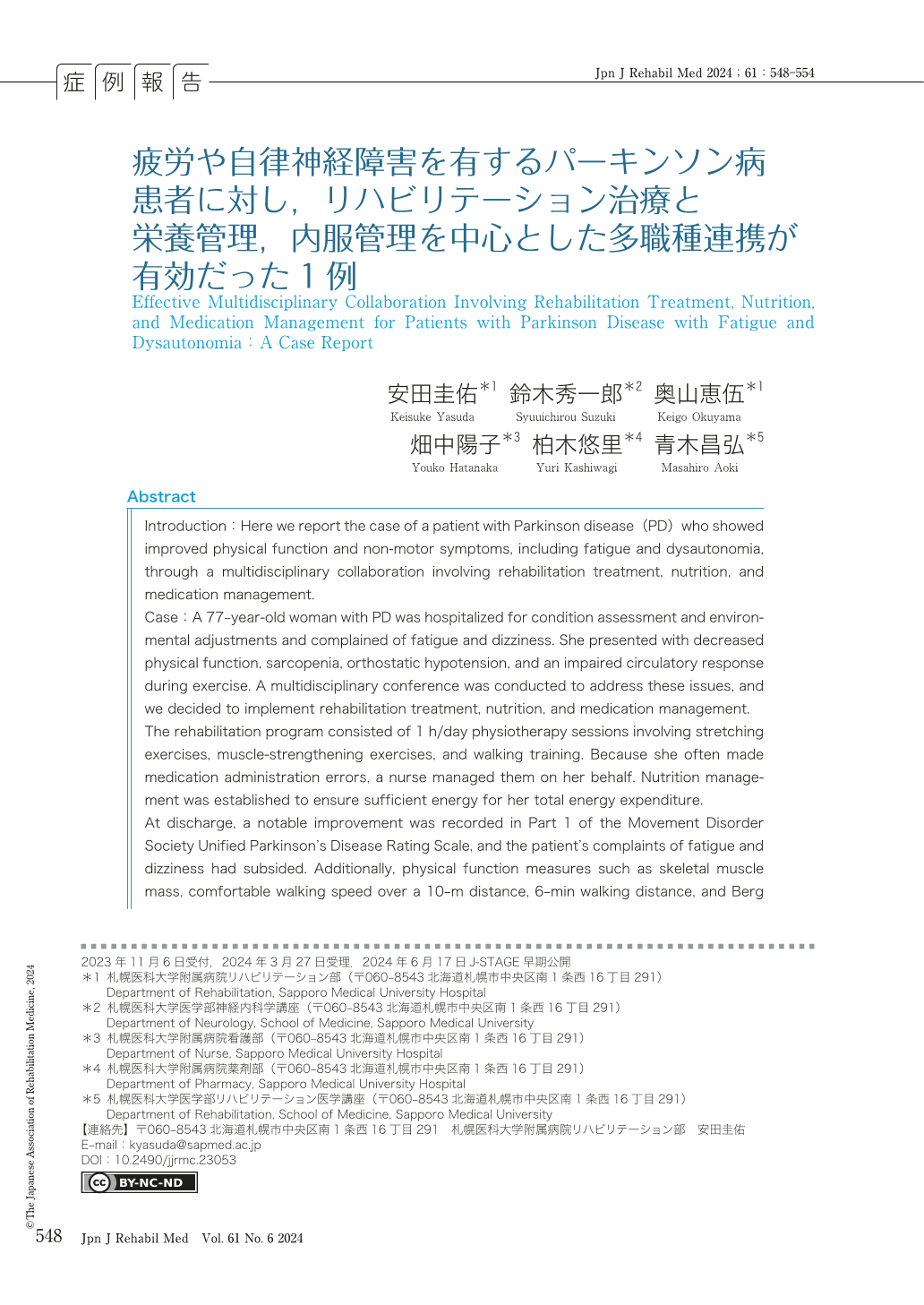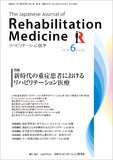Japanese
English
- 販売していません
- Abstract 文献概要
- 1ページ目 Look Inside
- 参考文献 Reference
はじめに
パーキンソン病(Parkinson disease:PD)は,振戦や筋強剛,寡動,姿勢反射障害といった運動症状の他,認知機能低下や自律神経障害,疲労などの非運動症状を呈する.近年,新薬の登場やデバイス療法の普及が進んでおり,適切にケア・管理することで症状の進行は緩徐になっており,最後までactivities of daily living(ADL)やquality of life(QOL)を保つためにPD患者に対するリハビリテーション治療の役割は大きくなっている.一方で,PD患者の高齢化や罹病期間の長期化が進んでおり,多彩な非運動症状に悩まされる場面が増えている.非運動症状の中でも疲労は32〜56%のPD患者で認め1),本邦の発現頻度は41.8%とされる2).PD患者では疲労の程度が強いほど,余暇における活動や精力的な身体活動の頻度,日常生活での活動時間,運動時における最大酸素摂取量が少なく3),疲労は患者のQOLを損ねる原因となる.PD患者の疲労にはPDの重症度4, 5)に加え,うつや認知機能障害,睡眠障害などの非運動症状2, 4-6),自律神経機能不全7)が関与するため,症例ごとに疲労の原因と対策を検討する必要があるが,運動症状に対してのドパミン補充療法やうつに対する治療以外では疲労に有効な治療が確立されていない.また,サルコペニアを有するPD患者では転倒頻度の増加8)やリハビリテーション治療効果の低下9)が報告されており,体重減少やサルコペニアに対する栄養管理の重要性が指摘されている.
今回,疲労と立ちくらみを主訴にもち,内服や食事の自己管理ができなくなり自宅生活が困難になったPD症例を経験した.薬物療法の追加や調整を行わず,多彩な非運動症状に対し多職種によるかかわりをもち,リハビリテーション治療を中心とした非薬物療法で疲労の軽減と身体機能の改善につながった症例について報告する.
Abstract Introduction:Here we report the case of a patient with Parkinson disease (PD) who showed improved physical function and non-motor symptoms, including fatigue and dysautonomia, through a multidisciplinary collaboration involving rehabilitation treatment, nutrition, and medication management.
Case:A 77-year-old woman with PD was hospitalized for condition assessment and environmental adjustments and complained of fatigue and dizziness. She presented with decreased physical function, sarcopenia, orthostatic hypotension, and an impaired circulatory response during exercise. A multidisciplinary conference was conducted to address these issues, and we decided to implement rehabilitation treatment, nutrition, and medication management.
The rehabilitation program consisted of 1 h/day physiotherapy sessions involving stretching exercises, muscle-strengthening exercises, and walking training. Because she often made medication administration errors, a nurse managed them on her behalf. Nutrition management was established to ensure sufficient energy for her total energy expenditure.
At discharge, a notable improvement was recorded in Part 1 of the Movement Disorder Society Unified Parkinson's Disease Rating Scale, and the patient's complaints of fatigue and dizziness had subsided. Additionally, physical function measures such as skeletal muscle mass, comfortable walking speed over a 10-m distance, 6-min walking distance, and Berg Balance Scale score improved. To optimize the patient's home environment, home nursing, home-visit rehabilitation, and meal delivery services were introduced to manage her medication and nutritional needs.
Discussion:In addition to rehabilitation treatment, the reconsideration of a patient's daily living activities, such as taking medications and meals, is important for improving their physical function and non-motor symptoms including fatigue and dysautonomia.

Copyright © 2024, The Japanese Association of Rehabilitation Medicine. All rights reserved.


